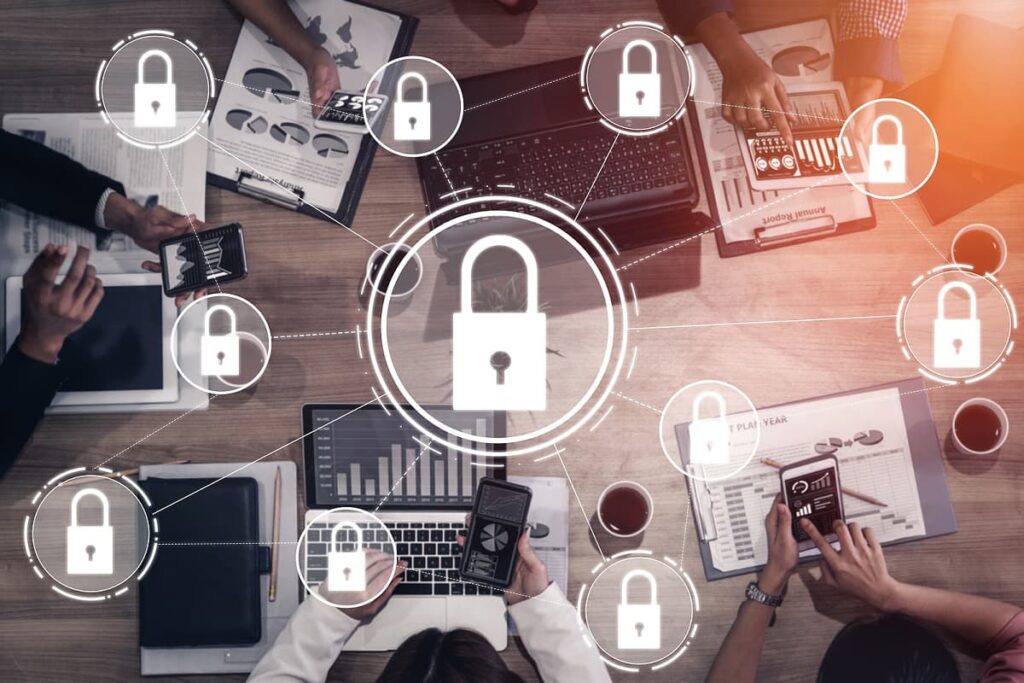Veridium’s 4 Fingers Biometric Authentication
Table of contents
Table of contents

According to a report by LastPass, your average corporate slave manages 191 passwords at their job. That may explain why 81% of breaches are a result of weak, reused, or stolen passwords. If that isn’t a compelling enough reason to ditch passwords, then maybe the time wasted using them is:

That’s right, you can squeeze 7.2 hours a year out of your slaves before you terminate them in favor of AI algorithms that won’t complain to HR because you paid them a compliment they didn’t like eight years ago. While replacing humans with AI is perhaps the most surefire way to solve the problem, you’ll inevitably have some humans left in the end who will still be using passwords. Can’t we take a break from doing extraordinary things like creating synthetic life and solve this problem once and for all? One company that thinks they may have an answer to the password problem is Veridium.
About Veridium
Founded in 2013, Massachusetts based startup Veridium has taken in an undisclosed amount of funding to develop a variety of interesting biometric authentication solutions that may very well be the solution to solving the password problem. Their solution centers around a software platform that can be used to enable biometric authentication in any organization. It’s not just about increasing security but also reducing costs. The company estimates that for every 1,000 employees in a firm, you’ll need three to five John-in-Mumbai types to deal with mundane tasks like password resets. Simply bringing on a biometric solution will reduce support calls by up to 50 percent, according to Gartner.
As for the biometric data being collected, Veridium offers a solution that is better than facial recognition and easy to implement. It all centers around the camera on your mobile phone which is used to scan your four fingers.

It’s far more accurate than facial recognition, with an up to 90% reduction in failed authentication attempts. The solution requires no additional hardware and can be used on any phone with a 5 megapixel camera and LED flash. Incredibly it’s able to provide the same level of accuracy as a traditional fingerprint scanner using nothing more than your phone’s camera. Unlike facial recognition, it doesn’t fail under bright lights or in dim rooms. In noisy areas, it’s better than voice. And it’s more secure than using a single thumbprint. Here’s how it compares to other popular biometric methods:

One case study the company provides involves an Amsterdam mobile-only bank called “bunq” which initially set about using facial recognition to authenticate their customers. What they learned was that facial recognition is much easier to spoof, and has higher rates of false rejection (not letting people in when it should). When they adopted the Veridium 4 Fingers biometric authentication, they learned that 78% of people preferred this method over using facial recognition or passwords. They also saw a sharp drop in failed authentication attempts. Overall it provides greater security along with a better user experience. When most business professionals can’t manage to use passwords as they should, why would a bank’s customers behave any differently?

In addition to the infrastructure needed to support an enterprise-strength biometric solution, Veridium also does “user behavior analysis” or UBA. Indulge your inner nerd and explore just how fascinating this stuff is by reading our past article on the topic called “BioCatch – Behavioral Biometrics for Fraud Detection“. Basically the idea centers around using machine learning to watch how you behave with your phone. Each person has a unique way of interacting with their phone that can’t be duplicated by someone else. Over time, the algorithms get to know each user’s behavior so that they can literally tell when someone else is using your phone. Companies like Callsign have developed deep learning algorithms that assess hundreds of data points to make sure that the person who is using your device is actually you. Going down this path means that eventually we may not even need to authenticate since we’re constantly being passively monitored by our phones. It’s all a bit Orwelian, but when it comes to security, companies will spare no expense. That’s because of whose head is on the chopping block when something goes pear shaped:

One of the biggest threats to a CEO’s career today is a security breach – unless your name is Marissa Mayer – in which case you can just play dumb and walk away with a quarter of a billion dollars.
Conclusion
Veridium isn’t the only player in this space, and we uncovered quite a few interesting biometric solutions before in our article titled Biometric Authentication Provides Body of Evidence. Where the company may have an advantage is in their infrastructure that supports other methods of authentication out there like facial recognition. If you’re concerned about someone hacking their servers and stealing all your biometric data, they’re addressing that with something called “visual cryptography” which is actually kind of cool to learn about. Earlier this year, Swedish bank Nordea adopted the platform citing the need to meet “new regulatory compliance demands”. When someone is forced to buy your product because of regulatory reasons, it becomes a pretty easy sell.
Sign up to our newsletter to get more of our great research delivered straight to your inbox!
Nanalyze Weekly includes useful insights written by our team of underpaid MBAs, research on new disruptive technology stocks flying under the radar, and summaries of our recent research. Always 100% free.














